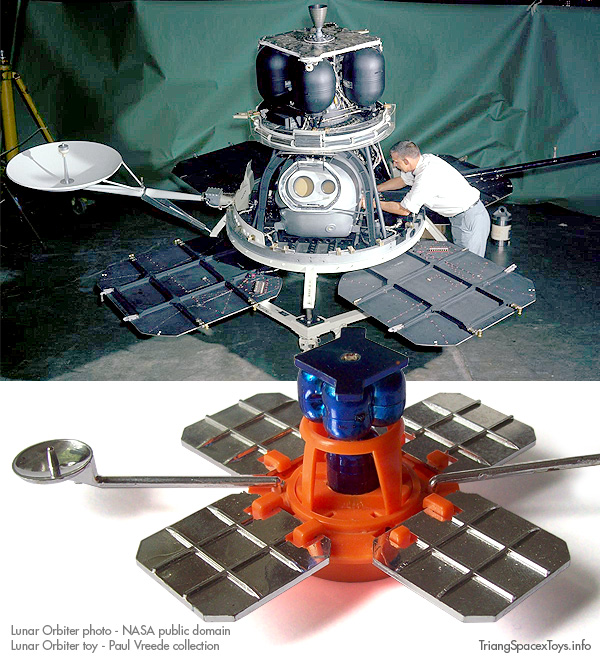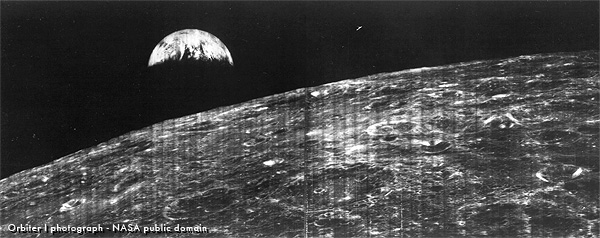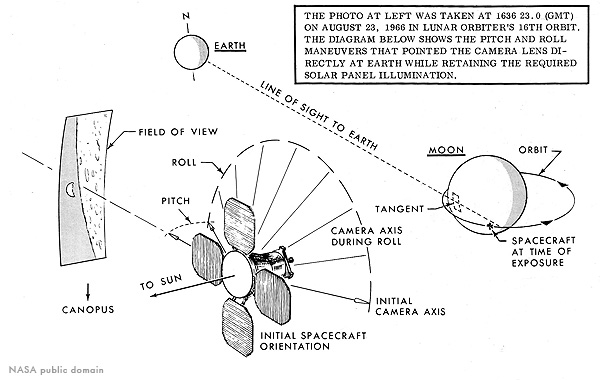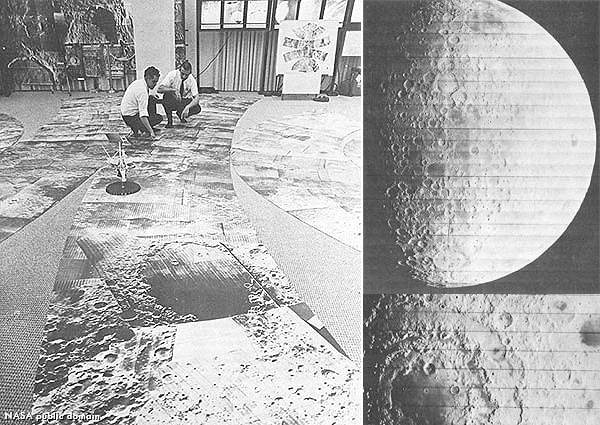
As the name implies, the Lunar Orbiter satellites were made to orbit the Moon. Five missions were launched in 1966-7, using Atlas-Agena boosters, with the objectives of finding suitable landing spots for the forthcoming Apollo lunar landers as well as mapping the surface of the Moon - the latter part resulting in 99% photographic coverage of the Lunar surface. Upon arrival, each Orbiter circled the Moon for a one to two-week period, taking and transmitting photographs before eventually being crashed on the surface a couple of months later to make sure they wouldn't be in the way of orbiting Apollo craft.

Built by Boeing, the Orbiters had a dual-lens camera developed by Eastman Kodak (originally for the U-2 and SR-71 spy planes), which superimposed a high-resolution central section on a mid-resolution image for each frame, using 70 mm film. After exposure, each film was developed and scanned by the on-board photographic unit before being transmitted back to Earth. Apart from taking photographs, the Orbitors also measured solar radiation levels and micro-meteoroid impacts as preparations for the eventual lunar landings. And they provided a valuable means of testing mission tracking equipment.

Dubbed the "picture of the century," Orbiter I was the first to photograph
the Earth from lunar orbit in 1966

Although of very high (1 meter) resolution, the photographs sent back by the Orbiters weren't always of the best quality, occasionally suffering from exposure problems, duplication or the odd missing piece. They were a revolutionary source of data however, and were extensively used for research and for compiling Lunar atlases. In 2000 a project was started by the US Geological Survey in Arizona to use the best Orbiter material for an improved Lunar mosaic. Seven years later, the Lunar Orbiter Image Recovery Project (LOIRP) was started to reprocess and digitise the Orbiter images from the original analogue video format, a process that was successfully completed in 2014.

Puzzling the Moon together from Orbiter IV photographs
Notes: (external links open in new windows)
The NASA history site has a chapter on the Orbiter missions.
Lunar photographs taken by the Orbiter missions can be viewed at the Lunar and Planetary Institute website.
Paul Woods found an official NASA activity report film that features the start of the Orbiter programme on Youtube.
A high-resolution chart of the first Earth picture is available from NASA.